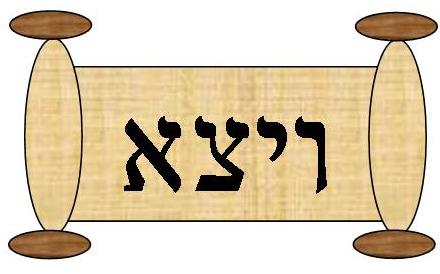
Nov 27, 2020 | Torat Devorah
D’var Torah
Parshat Vayetze
And Jacob went out from Be’er Sheva, and he went to Charan (Genesis 28:10). The story of Jacob’s journey to Charan is the story of every soul’s descent to the physical world. The Lubavitcher Rebbe explains: The soul, too, leaves behind the spiritual idyll of Be’er Sheva (literally, “Well of the Seven” — a reference to the supernal source of the seven divine attributes or sefirot from which the soul derives) and journeys to Charan (literally, “Wrath”): a place of lies, deceptions, struggle and hardship; a place in which material concerns consume one’s days and nights, sapping one’s energy, confusing one’s priorities, and all but obscuring the purpose for which one has come there in the first place. Yet it is in Charan, in the employ of Laban the Deceiver, not in the Holy Land and its “tents of learning,” that Jacob founds the nation of Israel. It is here that he marries and fathers eleven of the twelve sons who will become the twelve tribes of Israel. Had Jacob remained in the Holy Land, the life of this pious scholar who lived 3,500 years ago would have been of no significance to us today. The soul, too, achieves its enduring significance only upon its descent into “Charan.” Only as a physical being, invested within a physical body and inhabiting a physical environment, can it fulfill the purpose of its creation, which is to build “a dwelling for G-d in the physical world.”
And Jacob rose up early in the morning, and took the stone that he had put under his head (28:18). But earlier in it says, “And he took of the stones of the place, and put them under his head.” This tells us that all the stones gathered themselves together into one place and each one said: “Upon me shall this righteous man rest his head.” Thereupon all were merged into one (Talmud Chulin 91b).
“Jacob kissed Rachel, and he raised his voice and wept” (Genesis 29:11). Upon meeting his cousin, the young girl destined to be his life-mate, Jacob, a man in his upper seventies, kissed her. The shepherds around them were disgusted. Who does he think he is? He comes to our town to bring perversion. We have to do something about this. Jacob overheard their conversation and was upset. He kissed Rachel as an expression of love for his cousin, in a familial type of a way. He had no sensual thoughts, no lustful motives. If so, why did Jacob cry? He cried because he recognized that he had made a mistake. He hadn’t realized that the townsfolk were so base and so sensually oriented that they would take his innocent kiss as anything more than it was. (This explanation of the passage is based upon the commentary Da’as Sofrim by Rabbi Chaim D. Rabinowitz, a noted Torah scholar in Israel.)
We, the people of the Book, live life on a different plane. Although we have lived for centuries among the nations of the world, we remain, spiritually and intellectually, separate. It doesn’t even dawn on Jacob to look at Rachel in a lustful way, he was thinking in more elevated terms. He was thinking of family and of the future of the Jewish people. The townsfolk were not oriented the same way and their reaction was formed on the basis of their base assumptions.
Prepared by Devorah Abenhaim
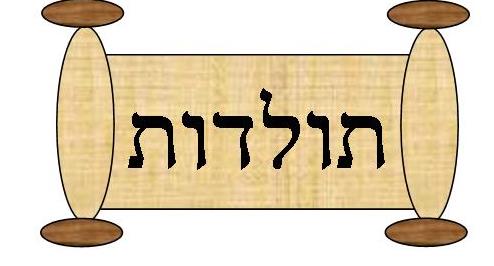
Nov 20, 2020 | Torat Devorah
The Torah states: “Jacob was an ‘Ish tam’ (straight person) who sat in tents (of study)” (Genesis 25:27) what do we learn from the fact that Jacob was an “Ish tam”? Rashi defines the word “tam” as a person who is not skilled in deceiving others. As is his heart, so are his words. Jacob was not called a “tam,” but an “Ish Tam.” That is, he was a master over the trait of being a “tam.” He was totally honest, a man of great integrity. However, in those situations when it was appropriate to use cunning strategy to accomplish something, he was able to do so.
The Rebbi from Lublin teaches that a person needs to be the master over all of his traits and appropriately use them. As the Sages say, “Whoever is compassionate when he should be cruel will eventually be cruel when he should be compassionate.” If a person fails to apply so-called negative traits in their proper times, he will end up applying them when it is wrong to do so.
After Avraham died, Jacob cooked lentil soup as a sign of mourning. Esau came from the field, saw the soup and said, “… please, pour for me from this red thing” (Genesis 25:30). Later in the Torah portion (27:22) the commentator, Rashi, mentions that Jacob always spoke politely and used the word “please.” Esau, however, always spoke in a rough manner to his father. What can we learn from the fact that he was polite in this conversation?
Rabbi Zelig Pliskin explains: Even though Esau excelled in honoring his father, he still spoke to him in an insolent and arrogant manner. We see here that when Esau had a desire for food, he spoke in a respectful manner and used the term ‘na’, “please”. This is the manner of people with faulty traits. Even though they constantly talk with chutzpah, when it comes to manipulating someone to fulfill their desire, they speak softly and humbly.
When Yitzchak found out that he gave the blessings to Yaakov and not to Esau as he thought he had, the Torah tells us: “Yitzhak trembled greatly” (Genesis 27:33). Why did Yitzhak tremble so much? Rabbi Chaim Shmuelevitz, the late Rosh HaYeshiva of Mir, cited the Sages who stated that Yitzhak experienced greater fear and anxiety at this moment than he did at the akaidah, when he was brought up as a sacrifice by his father, Avraham. There he was bound and ready to be killed with a sharp blade. From here we see, said Rav Chaim that the realization that one made a mistake is the greatest of pains. This was not a onetime mistake. Rather, Yitzhak realized that all the years he thought Esau was more deserving than Yaakov he was in error. The anxiety experienced in the awareness of error is a powerfully painful emotion.
Prepared by Devorah Abenhaim
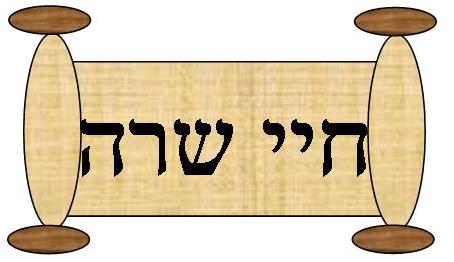
Nov 13, 2020 | Torat Devorah
The Torah tells us that “Sarah died at Kiryat Arba – the same is Hebron” (Genesis 23:2). The Or Hachayyim explains that we must not misunderstand that Kiryat Arba was the cause of her death. The reason the town was mentioned and was so named is to tell us that it was built on the four basic elements. Death normally implies a departure from, or disintegration of, the four basic elements that a body is composed of. When the Torah adds that “Kiryat Arba” is also known as Hebron, this is meant to be an illusion to the word “habor” – something that is joined together. The message is that when the righteous ‘die’, this is not to be viewed as a process of disintegration. The righteous are still called “alive” even when they have ceased to function in regular bodies on this earth. Maimonides illustrates this somewhat in the fourth chapter of Hilchot Yesodei Torah, where he describes that one element is capable of becoming transformed into another element, which was similar to it, i.e. earth can be transformed into water. When man cleaves to God, all his elements become transformed into fire, the element, which forms the basis of the soul. The Torah adds the apparently superfluous words “in the land of Canaan.” This is an allusion to the fact that this present world is called ‘The Land of Canaan”, a simile for the evil inclination or Satan. This is so because the existence of Satan is the incentive for us to overcome him and to attain holiness and sanctity (Zohar 1:80).
Eliezer, Abraham’s trusted servant, is sent on a mission to find a wife for Isaac. He meets Rebeccah and knows that she will become Isaac’s wife, as she passes all the required tests. When Eliezer goes in to meet the family, he states the following: “I am a slave of Abraham” (Genesis 24:34). The Alshekh comments that Eliezer wanted to forestall enquiries as to why Abraham or Isaac had not come personally on such an important errand. He also wanted to reassure them concerning the age difference between Isaac and Rebeccah. By pointing out that though he held a high position, he was still a slave, he made them aware of the great stature of his master. It would not be dignified for someone of his master’s stature to come PERSONALLY on such an errand. Therefore, he mentioned something about Abraham’s great wealth. By explaining the circumstances of Isaac’s birth, he assured them that Isaac was not blemished and suffered no disability. The fact that Isaac had not come himself was not because he had something to hide. He also wanted Rebeccah’s family to know that Isaac would be the sole heir of all his wealth. If Isaac had waited this long to get married, it was not for lack of willing partners, but because Abraham did not want Canaanite blood in his family. He wanted it understood that this was the ONLY objection of the local girls, but that Eliezer would be free to choose anywhere but in the land of Canaan, even if such a girl were not related to Abraham. Concerning their possible reservations about entrusting Rebeccah to him, a mere slave, Abraham had assured him that God would send an angel to precede him on his mission. He relates how such prediction had indeed been fulfilled at the well. Also, he had covered the distance in a single day; further proof of Divine assistance (“I arrived this day”). When relating the test he had decided on at the well, he changes the details so as not to give the impression that ANY girl who would offer him water had a chance to become Isaac’s wife. This is why he refers to almah, a young lady of a good family.
Prepared by Devorah Abenhaim

Mar 13, 2020 | Torat Devorah
In this week’s parshah, we read of the interminable sin of the Israelites with their construction of the Golden Calf. Much work and study has gone into exploring this act, and we will look at some of the commentaries surrounding this issue, and what, in actuality, was the Israelites’ sin.
Judah Halevi explores this issue and states that the Israelites’ offence lay in the fashioning of an image which had been forbidden to them, and in attributing Divine sanctity to the product of their own desires and hands without being commanded to do so by God. In extenuation of their sin, Halevi explains that we should remember the lack of unanimity that preceded it and the fact that the worshippers of the Golden Calf constituted only 3,000 out of a mass of 600,000 persons. However, the excuse of the leaders who helped in fashioning the Golden Calf was that they did so for the purpose of distinguishing between the believer and disbeliever in order to put to death those caught actually worshipping it. Their culpability lay in leading the rebellion from the realm of thought into that of deed. Judah Halevi also attempts to analyze the role of Aaron in this whole ordeal, for as we know, he is considered blameworthy and was punished in connection to this sin. Halevi believes that the sin of the Israelites did not constitute a total repudiation of the service of He that brought them out of Egypt, but was rather a partial repudiation of some of God’s commands. The Almighty had warned them against making images, and they had made one instead of waiting. They themselves had no right to determine the mode of worship and make an altar and sacrifices in accordance with it. Their conduct can be compared to the parable of the fool who entered the doctor’s dispensary and himself prescribed the drugs, thereby killing the patients who would have been saved by being given the proper doses by the doctor himself. The people did not intend to commit idolatry but imagined that they were striving to worship the true God. For this reason, they applied to Aaron to translate their strivings into reality. Their sin seems much more serious today because few indulge in actual worship of images as they did in those days. If instead they had built a house of worship to suit their own wishes, it would not have seemed so serious to us since we are accustomed today to build our own houses of worship and even maintain that the Divine presence rests on them. Were it not for the necessity in exile of keeping the community together, this conduct of ours would be forbidden just as it was in the days of the kings when they denounced those who made their own private places of worship which were called ‘high places’. Pious kings tore them down in order to preserve the uniqueness of the house which God himself had chosen. In those days, images were not in themselves forbidden. As we may note from the Divine command to make the cherubim. Despite all this, and the death punishment of the 3,000 sinners, the manna did not stop, the pillar of fire continued to lead them, and the prophetic spirit persisted in their midst. The only thing that they were deprived of was the two tablets, which Moses broke and interceded with God to restore. These were restored, and that iniquity was expiated.
Nechama Leibowitz helps to clarify Halevi’s outlook and states that he maintains the legitimacy of the cherubim and the forbidden nature of the Golden Calf, which was derived solely from the express command of God Himself. Images were not in themselves reprehensible. The calf was forbidden because it was not made at the bidding of the Almighty. The cherubim were permitted because they were made in accordance with His wish. Man must not arbitrarily make his own laws, and create his own ritual. This must be determined strictly in accordance with Divine wishes.
One may question how the Israelites, who had heard the word of God himself, transgressed the command of making a graven image, and as a result, had to wander in the desert for 40 years. Rambam, in his Guide for the Perplexed, explains: It is not in the nature of man reared in slavery, in bricks and straw and the like, to wash his hands, as it were, of their dirt and suddenly rise up and fight with the progeny of Anak (the giants of Canaan). God, in his wisdom, contrived that the Israelites wander in the wilderness until they had become schooled in courage, since it is well known that physical hardships toughen and the converse produces faintheartedness. A new generation was born which had not been accustomed to slavery and degradation. Leibowitz interjects that we therefore should not be astonished that the generation that had heard the voice of the living God and had received the commandment “thou shalt not make other gods besides Me” descended to the making of the Golden calf forty days later. One single religious experience, however profound, was not capable of changing the people from idol worshippers into monotheists.
Prepared by Devorah Abenhaim
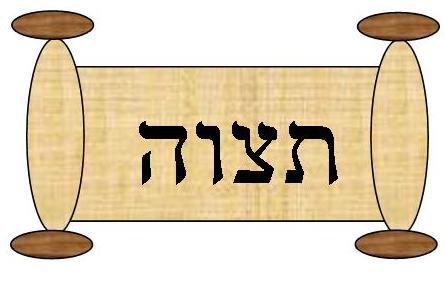
Mar 6, 2020 | Torat Devorah
The Torah tells us that the Altar upon which burnt offerings were brought was made of wood that was covered with a thin layer of copper. It is therefore referred to as “the copper Altar” and “the Altar of burnt offerings.” The Midrash states, “Moshe said before G’d, ‘Master of the Universe, You had commanded me to make an Altar from Achacia wood and cover it with copper. You also told me that there will be a continuous fire that burns upon it. Will the fire not melt away the copper and burn the wood that is beneath it?’ G’d responded to Moshe, ‘The fact that fire burns through copper and consumes wood is a phenomenon that exists within the physical realm. However, in the spiritual realm these laws do not apply. Gaze upon the angels. They are composed of a consuming fire. In addition, in the spiritual realm there are great amounts of ice, yet the fire of the angels does not melt it. Fire and ice coexist without interfering with one another.”
Rabbi Yosek Kalatsky comments: The Midrash tells us that at Sinai every Jew stood in a physical state of perfection. Whoever had been previously blind was able to see. If one were crippled, he was able to stand. Those who were deaf were able to hear. This is because the Divine Presence had come upon Sinai. Since G’d is the source of all life and everything that is perfect, anything that is within His proximity is infused with a life force and thus assumes a state of perfection. There is no deficiency within the life force that one receives directly from G’d. Thus, anything that is exposed to His Presence assumes a perfected state. However, after the sin of the Golden Calf the Divine Presence distanced Itself from the Jewish people. Those who had been previously handicapped reverted back to their imperfect state. Moshe had understood that the Mishkan was a semblance of Sinai but was not an exact replication of Sinai. Since the Jewish people themselves were no longer qualified to contain the Divine Presence, directly within their midst, it was only through the medium of the Mishkan that they were able to have a relationship with G’d. Moshe believed that the Mishkan no longer represented the spiritual realm. Thus, it was subject to physical phenomena. Ramban explains that every aspect of the Mishkan reflected and symbolized the setting of Sinai. Thus, the Mishkan was the equivalent of Sinai in accommodating G’d’s Presence. Moshe, therefore needed to be informed that despite the spiritual regression of the Jewish people, as a result of the sin of the Golden Calf, the Mishkan itself was an exact spiritual replication of the Sinai setting.
Chazal tell us that before Adam had sinned by eating from the Tree of Knowledge all trees were fruit bearing. It was only after the sin that non-fruit bearing trees came into being. After the sin of Adam, the world became tainted and thus G’d distanced Himself to a degree from the physicality of existence. Consequently, some trees no longer bore fruit because they were no longer attached to the source of life. Thus, they existed in a deficient state. At the end of time, when G’d will return and permeate all existence, all trees will once again produce fruit.
Prepared by Devorah Abenhaim
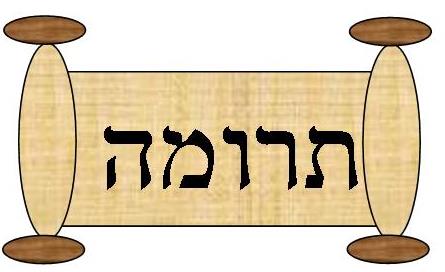
Mar 2, 2020 | Torat Devorah
Hashem commanded Moshe to build a Mishkan (Sanctuary), symbolizing His presence among the Jewish people and constructed per His Divine pattern. (With the exception of the Golden Calf, the balance of Shemot is devoted to the preparations for, and the construction of, the Mishkan.) The Jews were asked to voluntarily give offerings of precious metals, fabrics, skins, wool, oil, spices, incense and precious stones.
Why was it necessary for the Jews to be accompanied during their wandering in the desert by the Mishkan? Doesn’t Hashem’s presence permeate the entire universe? And, why does the Torah use the words “And let them make Me a Sanctuary, and I will dwell in them” (i.e, and not “in it”)? Rabbi M ordechai Katz explains: While we may learn that Hashem’s presence is everywhere, our intellect can’t readily conceive of this; thus, Hashem provided for a specific concrete place for His presence (i.e, the Mishkan, and later the Temple). But what do we have now? The Schechinah (Divine Presence) isn’t reserved for the Mishkan and Temple — every home, synagogue and house of Jewish assembly which exhibits a Jewish manifestation through prayer, learning, mitzvos (such as family purity, kashrus, mezuzah, etc.) is itself a haven of holiness in which Hashem dwells.
“Speak to the Children of Israel, and they should take an offering for Me [Hashem]”. Why did Hashem need to emphasize “for Me”? After all, who would pass up the chance to contribute towards the Mishkan, and to seek forgiveness for the Golden Calf (according to Rashi, the Torah doesn’t follow chronological order in this instance — the Mishkan was actually assigned by Hashem as atonement for the Golden Calf)? Rabbi A. Henach Leibowitz states that the Torah is revealing a problem we must deal with daily — even when it can’t prevent us from performing mitzvos, our “yetzer hara” (evil inclination) can corrupt and attack even the purest intentions by creating ulterior motives for our actions; it persuades us to do mitzvos for honor and prestige, rather than wholeheartedly out of service for Hashem. If we view everything we do (e.g., our careers, money, etc.) as a means of serving Hashem, we can infuse the mundane with holiness. As Rabbi David Feinstein noted, this is why we recite in our blessing “Who has made us holy with His mitzvos” before performing a mitzvos; Hashem made us holy by giving us His mitzvos — this is our honor.
Why does the Torah go into such detail about the Mishkan, particularly since (unlike the Temple), it was never meant to be a permanent edifice? The Lubavitcher Rebbe explains that the command to build the Mishkan came soon after the Jews had experienced Hashem’s revelation at Mt. Sinai; when Hashem’s physical presence departed, a second stage in the revelation took place — a stage where it is incumbent upon man to actively draw Godliness into the world and provide a dwelling place for Hashem in it. The Mishkon allowed the Jews to transform the physical into a dwelling place for the spiritual. The name of this Parsha — Terumah — has the dual meanings “separating” and “uplifting” — by separating material objects from their mundanity and uplifting them to holiness, a Jew is empowered by Hashem to transform the entire world into one vast Tabernacle; in such service, every step and detail is important.
Prepared by Devorah Abenhaim












